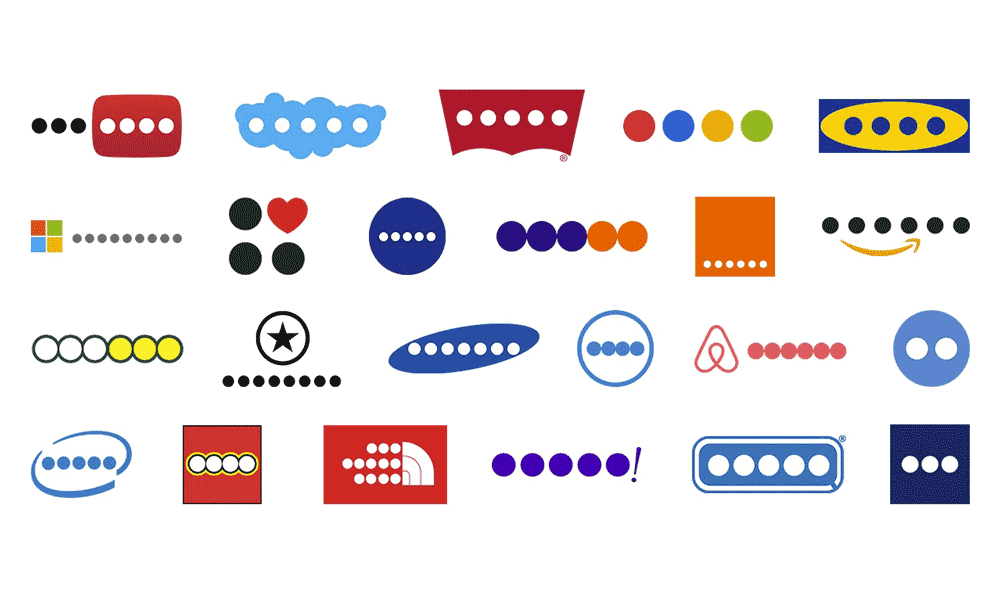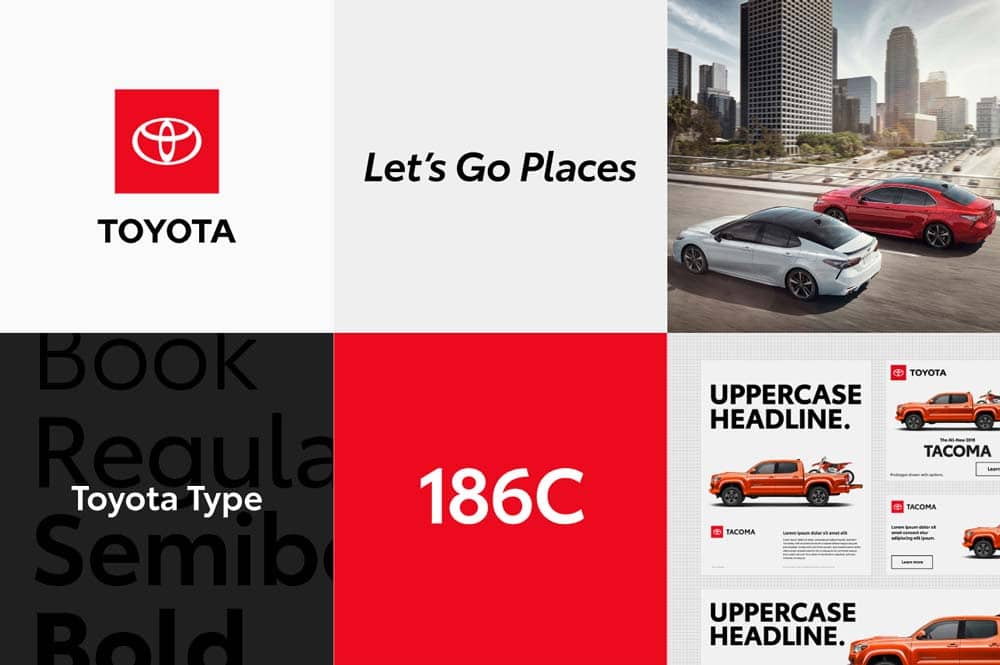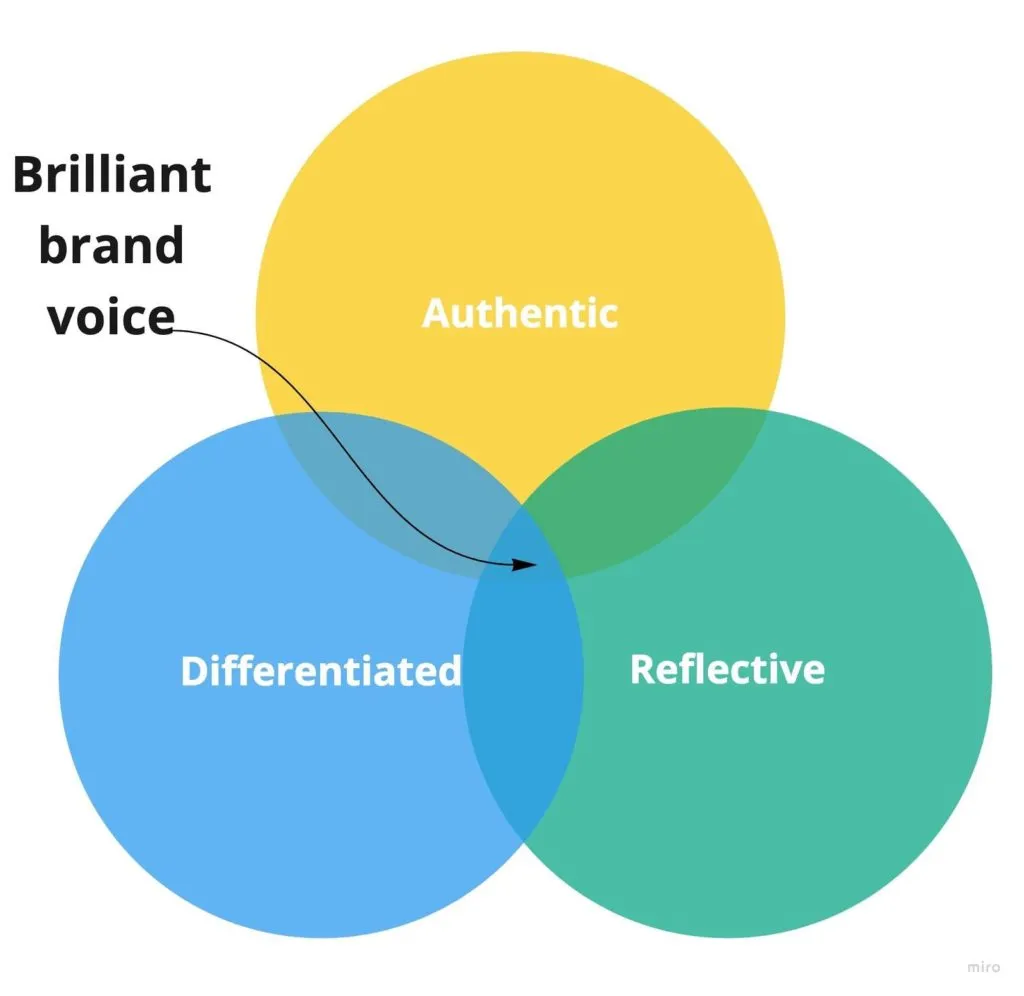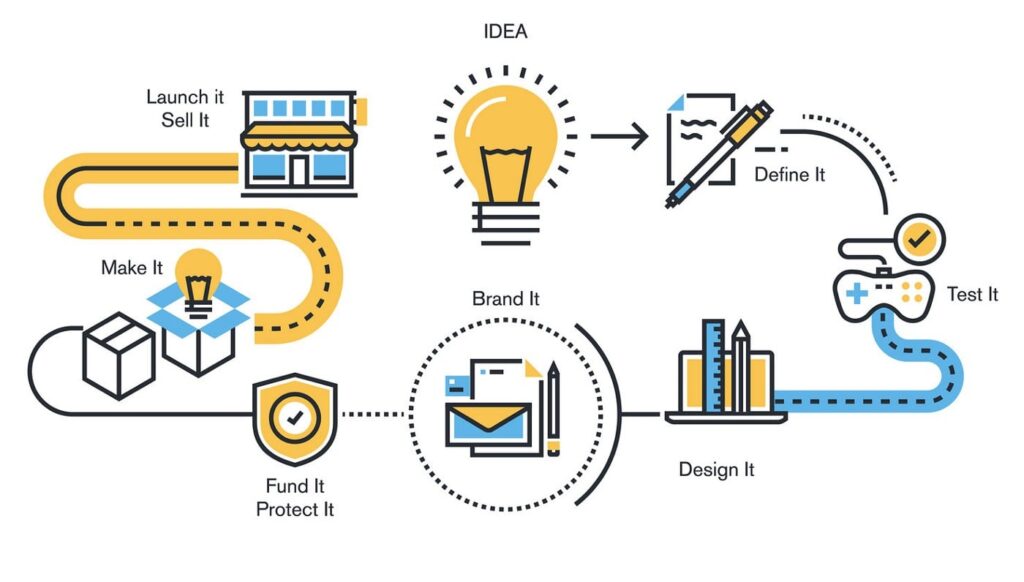Brand Identity Design: Crafting an Authentic and Memorable Brand Image
Have you ever caught a mere glimpse of a logo, tagline, or colour scheme and instantly recognised the brand behind it? Think about Nike's iconic swoosh or Starbucks's unmistakable siren, and you'll get the idea. If you've experienced this, you've encountered the power of a well-crafted brand identity.
In an age where consumers are increasingly voting for their values, a company's brand identity isn't just a nice-to-have but an absolute necessity. In fact, according to a recent study, a staggering 88% of consumers say authenticity is a crucial factor when deciding which brands they like and support. On top of that, another study reveals that consistent brand presentation across all platforms can increase revenue by up to 23%.
Therefore, crafting a solid brand identity is more than designing a cool logo or choosing your company's colours. It is about creating a comprehensive visual language that resonates with your audience and communicates who you are, what you stand for, and why you exist.
In this post, we'll be delving into the ins and outs of brand identity design, providing insights and actionable tips on creating a brand image that is authentic and profoundly memorable. So, whether you're a startup embarking on your branding journey or a seasoned company looking to refresh your idea, you're in the right place!
Stay tuned to learn how to set your brand apart, captivate your target audience, and leave a lasting impression on the market. Let's dive in!
Table of Contents
The Significance of Brand Identity Design
In a world overflowing with products and services vying for attention, it's easy for businesses to get lost in the noise. That's where brand identity design comes in—a powerful tool that allows companies to establish recognition, build trust, and convey their values and personality.
Establishing Recognition and Recall

When we delve into the realm of successful brands, it's difficult not to conjure up the logos that have become synonymous with their names. Take, for instance, the golden arches of McDonald's, the bitten apple of Apple, or the iconic swoosh of Nike. These visual representations have transcended mere images to become powerful symbols deeply etched into our collective consciousness. They effortlessly trigger immediate recognition, evoking associations and emotions tied to the respective brands.
The importance of a well-designed brand identity cannot be overstated. It serves as the cornerstone of visual consistency across various touchpoints, enabling consumers to effortlessly identify and remember a brand amidst the cacophony of choices they face every day. A strong brand identity is a mental shortcut, an instantly familiar friend that guides consumers through the overwhelming sea of options.
When we think about a brand's visual identity, it encompasses more than just a logo. It includes the colours, typography, imagery, and overall design elements representing the brand's personality, values, and essence. These elements work in harmony to create a visual language that communicates with consumers on a subconscious level.
Consistency is vital when it comes to brand identity. Whether a consumer encounters a brand's logo on a product package, a website, a social media post, or a billboard, the visual elements should remain consistent and instantly recognisable. This consistency reinforces the brand's identity and builds a strong connection with consumers, establishing trust and loyalty over time.
Beyond visuals, a well-designed brand identity also extends to other sensory experiences. Consider the signature sounds associated with brands like Intel or Harley-Davidson or the distinctive scents that waft through luxury stores. These multisensory elements enhance the brand's identity and contribute to a holistic, immersive consumer experience.
A carefully crafted brand identity fosters recognition and memorability and conveys a sense of quality and professionalism. It signals to consumers that a brand pays attention to detail and cares about how it presents itself. In a crowded marketplace, where competition is fierce, a strong brand identity can be the determining factor that sets a brand apart and helps it rise above the noise.
Successful brands understand the power of a well-designed brand identity. They invest time, effort, and resources into creating a visual language that resonates with their target audience. They meticulously craft every element, ensuring it aligns with their brand story, values, and aspirations. Through this intentional and consistent approach, these brands forge a deep connection with consumers, establishing a lasting imprint in their minds and hearts.
So, the next time you encounter a familiar logo—the golden arches, the bitten apple, or the iconic swoosh—take a moment to appreciate its artistry and intentionality. Recognise the impact that a well-designed brand identity can have, not just in terms of instant recognition but also in shaping our perceptions, choices, and the way we navigate the world of consumerism.
Building Trust and Credibility

Consistency is a powerful tool that cultivates trust in a brand. By maintaining a cohesive and harmonious brand presence, both in terms of visual elements and overall experience, a brand establishes itself as a professional and reliable entity. This commitment to consistency signals to consumers that the brand values quality and pays attention to even the most minor details. A study conducted by Lucidpress found that consistent branding across all channels can significantly impact revenue, potentially increasing it by up to 23%.
To illustrate the importance of consistency, let's consider the example of a luxury fashion brand. Such a brand carefully crafts an elegant and refined visual identity that encompasses every aspect of its presentation. From the meticulously designed logo to the precisely selected typography and imagery, every element creates an aura of exclusivity and expert craftsmanship. This unwavering commitment to consistent branding captures attention and instills confidence in consumers.
When consumers encounter a luxury fashion brand that maintains a consistent visual identity, they are likelier to perceive it as trustworthy and deserving of investment. Brand consistency signals a dedication to high standards and an unwavering commitment to quality. It creates a sense of familiarity, allowing consumers to connect with the brand on a deeper level.
Moreover, consistent branding across various channels reinforces the brand's message and enhances its impact. Whether consumers interact with the brand through its website, social media platforms, or physical stores, they are met with a unified brand experience. This coherence solidifies the brand's image in the minds of consumers, leaving a lasting impression and building a foundation of trust.
Consistency applies to visual elements and extends to consumers' overall experience with a brand. From customer service interactions to product quality and packaging, a consistent brand identity ensures that every touchpoint aligns with the brand's values and promises. By delivering a consistently positive experience, the brand reinforces its reliability and credibility in the eyes of consumers.
Conveying Values and Personality

A brand is not merely confined to a product or service; it encompasses a comprehensive set of values and possesses its distinctive personality. It is through brand identity design that these qualities are visually and emotionally expressed. By employing a strategic combination of colours, typography, imagery, and messaging, brands can effectively communicate their desired brand image, evoke specific emotions, and deeply resonate with their target audience.
Brand identity design involves carefully crafting a visual language that aligns with the brand's essence and resonates with its intended consumers. Take, for instance, a brand that strives to establish itself as eco-friendly and sustainable. Such a brand might deliberately select a nature-inspired colour palette featuring calming hues in the natural world, such as shades of green and earthy tones. This choice of colours helps to reinforce the brand's commitment to sustainability while creating an immediate connection with the audience.
In addition to colours, typography plays a vital role in brand identity design. A brand can enhance its visual impact by choosing fonts embodying its personality and values. For an eco-friendly brand, selecting typography that conveys a sense of simplicity, harmony, and organic aesthetics can effectively reinforce its sustainability message.
Imagery also plays a crucial role in brand identity design. By incorporating visuals showcasing lush landscapes, renewable energy sources, or environmentally conscious practices, the brand can communicate its dedication to eco-friendliness. Such imagery can evoke serenity, appreciation for nature, and a desire to protect the environment, thus attracting like-minded consumers who prioritise sustainability.
Furthermore, messaging and language choices are essential elements in brand identity design. The brand's voice and tone should align with its values and emotionally connect with the target audience. In the case of the eco-friendly brand, messaging might emphasise the importance of sustainable living, promote eco-conscious behaviours, and inspire individuals to impact the environment positively. By crafting compelling messages, the brand can establish a solid emotional bond with its audience and foster a sense of shared values and purpose.
Key Elements of Brand Identity Design
Creating a compelling brand identity requires a thoughtful approach incorporating several essential elements. Explore these components and understand their significance in crafting an authentic and memorable brand image.
Logo Design: The Face of the Brand

The logo is more than just a mere image; it serves as the very face of a brand, representing its identity and encapsulating its core values, mission, and personality. It is a visual embodiment of the brand's essence, creating an immediate and lasting impact on its audience. An effective logo is characterised by its simplicity, memorability, and adaptability, enabling its application across diverse mediums and sizes. Its purpose is to distil the brand's unique attributes into a single visual mark, acting as a visual cue that triggers instant recognition and fosters an emotional connection with consumers.
Consider the iconic Nike swoosh as a prime example. This deceptively simple design can evoke a sense of movement, energy, and athleticism. Its clean lines and dynamic shape perfectly capture the spirit of the brand. Over time, the Nike swoosh has become synonymous with the brand's unwavering commitment to excellence and empowerment, transcending the boundaries of language and culture. It has become a universal symbol that resonates with individuals worldwide, fostering a solid emotional bond with consumers.
The Nike swoosh goes beyond being a mere logo; it has transformed into a powerful icon that embodies the brand's values and evokes emotions within its audience. This single visual mark is a testament to the brand's relentless pursuit of greatness, constantly inspiring athletes and non-athletes alike to push their boundaries and strive for success. It represents Nike's energy and passion for its products and the empowerment it provides to those who wear them.
Moreover, the Nike swoosh is a visual language that effortlessly communicates the brand's identity, making it instantly recognisable. Whether on a shoe, apparel, or advertising campaign, the logo maintains its clarity and impact thanks to its versatile design. This adaptability allows the Nike swoosh to seamlessly integrate into various mediums and sizes without losing its power or meaning.
Colour Palette: Evoking Emotion and Associations

The impact of colours on our emotions and perceptions is undeniable, as they can evoke certain feelings and shape our experiences. When establishing a brand's visual identity, carefully selecting a colour palette is crucial in creating a captivating and harmonious representation. Each colour carries its symbolism and associations, adding depth and meaning to the brand image.
For example, blue, a colour often associated with trust and professionalism, can instil a sense of reliability and dependability in consumers. Its relaxed and calming nature can evoke feelings of serenity and stability. On the other hand, vibrant colours such as red and yellow are known for their ability to convey energy, excitement, and optimism. Red can evoke a sense of passion, intensity, and even urgency, while yellow exudes happiness, warmth, and joy.
An excellent illustration of the power of colours in brand identity can be found in the iconic red and white colour scheme of Coca-Cola. The bold and vibrant red the brand employs immediately captures attention and symbolises happiness, passion, and excitement. It resonates with the enthusiasm and joy often associated with the Coca-Cola experience. Furthermore, white in the colour combination adds a touch of purity, simplicity, and elegance, reinforcing the brand's commitment to delivering quality products. The juxtaposition of these colours results in a visually appealing and recognisable visual identity, aligning perfectly with the values and essence of the Coca-Cola brand.
By employing such a distinctive colour palette, Coca-Cola has created a visual identity that stands out in a crowded marketplace and establishes a strong emotional connection with consumers. The harmonious combination of red and white speaks directly to the brand's personality and creates a memorable visual experience. The colour scheme plays a significant role in shaping the overall brand perception, whether it's the excitement of opening a can of Coca-Cola or the feelings of joy and togetherness associated with the brand's iconic advertisements.
Typography: Communicating Style and Tone

Typography is pivotal in brand identity design, as it enhances readability, conveys style, and effectively communicates a brand's overall tone. The careful selection of fonts can evoke a wide range of emotions and associations, making it crucial for businesses to choose typography harmoniously with their brand's tone and target audience. By doing so, they can establish a cohesive and memorable brand identity.
When crafting a brand identity for a luxury business, the choice of typography becomes even more critical. Elegant and sophisticated serif fonts are often the go-to choice for such brands. The timeless and refined qualities of serif fonts evoke a sense of opulence and prestige, which are highly desirable in the luxury market. Each curve and stroke of a serif font conveys meticulous attention to detail, further reinforcing the brand's commitment to quality and craftsmanship. By utilising these fonts, luxury brands can establish a sense of sophistication that resonates with their discerning clientele, creating a lasting impression of exclusivity.
On the other end of the spectrum, bold and quirky sans-serif fonts can be an excellent choice for brands that aim to project a playful and modern image. These fonts exude a sense of fun and youthfulness, capturing the attention of a more vibrant and dynamic audience. The absence of the small decorative lines, known as serifs, in sans-serif fonts lends them a clean and contemporary appearance. This simplicity allows the brand's personality and messaging to shine through, making a bold statement that aligns with the brand's energetic and forward-thinking nature.
Whether opting for elegant serifs or bold sans-serifs, the ultimate goal is to select typography consistently conveys the intended brand image across all touchpoints. Consistency is crucial for building brand recognition and establishing a strong visual identity. By utilising typography that aligns with the brand's values and personality, businesses can ensure that every piece of communication, from websites to advertisements to packaging, works harmoniously to create a cohesive brand experience.
Moreover, it is essential to consider the target audience when making typographic choices. Understanding the preferences and expectations of the intended consumers allows brands to tailor their typography to resonate with their audience effectively. By using fonts that resonate with the target demographic, brands can establish a deeper connection, engendering trust and loyalty among their customers.
Imagery and Visual Style: Creating a Cohesive Visual Language

Images and visuals possess an extraordinary ability to captivate and engage individuals emotionally, impacting their minds. They have the power to transcend language barriers and communicate universal messages that resonate deeply with viewers. Whether through the lens of a camera, the strokes of a brush, or the artful arrangement of graphic elements, the utilisation of a consistent visual style plays a pivotal role in establishing and reinforcing a brand's identity.
Consider the iconic example of Apple, a company renowned for its unwavering commitment to a clean and minimalist visual style. From the meticulously composed product photography showcasing every curve and detail of their devices to their website's sleek and user-friendly design, Apple exemplifies the power of simplicity, elegance, and attention to detail in their visual language. This deliberate and refined approach is ingrained in their brand narrative, helping consumers connect deeply with their products and ethos.
Apple's visual style serves as a metaphorical window into its philosophy, embodying its dedication to delivering technology that seamlessly integrates into users' lives while exuding a sense of aesthetic allure. Apple creates a cohesive brand experience transcending individual products by adhering to a consistent visual identity. Each element, carefully crafted and thoughtfully executed, speaks volumes about their meticulousness, passion for innovation, and pursuit of excellence.
This approach strikes a chord with consumers who appreciate the inherent beauty of simplicity. Apple's minimalist visual language fosters an emotional connection with its target audience, emphasising that its products are designed with the user in mind. By stripping away unnecessary complexity, they create a harmonious blend of form and function that resonates with individuals seeking aesthetic pleasure and seamless functionality.
Beyond mere aesthetics, Apple's visual style tells a compelling story about its brand. It conveys a sense of sophistication, modernity, and a forward-thinking mindset. It becomes a symbol of their dedication to pushing boundaries, challenging the status quo, and reimagining the possibilities of technology. Through their visuals, Apple conveys a narrative that transcends words, evoking emotions and aspirations in the hearts of consumers.
The Tone of Voice and Messaging: Connecting through Words

The tone of voice and messaging a brand utilises extends beyond visual aesthetics and delves into the intricate realm of effective communication through the written and spoken word. It encompasses the brand's language style, choice of words, inflexions, and overarching personality. By nurturing a consistent and authentic tone of voice, a brand can forge a powerful brand identity that profoundly resonates with its target audience.
In the realm of brand communication, consistency reigns supreme. Whether a brand opts for a formal and authoritative tone or a friendly and conversational one, maintaining a unified voice across all communication channels is pivotal. This unwavering consistency ensures that the brand's unique personality consistently shines through, fostering a cohesive brand experience that forges emotional connections with consumers.
The language style employed by a brand plays a crucial role in shaping how its audience perceives it. Each word, carefully selected and thoughtfully strung together, weaves a narrative that captures the essence of the brand's values, vision, and mission. A brand's language style may embody sophistication and professionalism, projecting an air of authority and expertise. Alternatively, it may embrace an approachable and warm tone, engaging in conversations with customers as though they were old friends. Regardless of the chosen style, it is imperative to remain faithful to the brand's core identity to establish credibility and build trust.
In tandem with language style, the choice of words becomes an influential tool in expressing a brand's personality. The careful selection of words can evoke specific emotions, shape perceptions, and establish a distinct voice. A brand seeking warmth and familiarity may employ inclusive and relatable language, fostering a sense of belonging. Conversely, a brand aiming to convey professionalism and industry expertise may opt for precise and technical terminology, signalling a deep understanding of the subject matter. By consistently employing carefully chosen words, a brand can craft an unmistakable presence that resonates with its audience and sets it apart from competitors.
An authentic tone of voice serves as a bridge between a brand and its consumers. It humanises the brand, facilitating a genuine connection and fostering trust. When a brand's messaging aligns seamlessly with its core values and beliefs, it generates authenticity that resonates with customers on a deeper level. Consumers are more likely to engage with a brand that speaks to them in a consistent, relatable, and trustworthy manner. A brand's voice becomes a familiar friend, guiding consumers through their journey and offering solutions tailored to their needs.
The Brand Identity Design Process
Developing a compelling brand identity requires a systematic approach that aligns with a brand's objectives and target audience. While the process may vary depending on the scope and complexity of the project, here are the fundamental steps involved:
Research and Strategy: Understanding the Brand and its Audience

To embark on the design phase of any project, it is imperative to lay a solid groundwork through comprehensive research and strategic planning. These initial steps are crucial as they provide invaluable insights and inform the subsequent creative process. Before delving into a brand's visual elements and aesthetics, it is essential to understand the target audience, analyse competitors, and establish a clear brand identity.
A thorough comprehension of the target audience is fundamental to creating a brand identity that profoundly resonates with them. By gaining insights into their preferences, desires, and pain points, designers can tailor their creative decisions to meet the specific needs of the intended consumers. This in-depth understanding allows for the development of a brand identity that establishes a solid emotional connection, engenders trust, and elicits a profound response from the audience.
Moreover, conducting a comprehensive competitor analysis is crucial in developing a unique and differentiated brand identity. By thoroughly examining the landscape in which the brand will operate, designers can identify gaps in the market and strategically position the brand to stand out from the competition. This analysis provides a valuable opportunity to assess competitors' strengths and weaknesses, allowing designers to craft a brand identity that capitalises on the untapped potential within the market.
Defining the brand's positioning, values, and unique selling points is another vital aspect of the research and strategy phase. This involves carefully articulating the brand's essence, core values, and what sets it apart from other players in the industry. By clearly defining these aspects, designers can align the brand's visual elements with its underlying principles, ensuring consistency and coherence throughout all touchpoints.
In addition, research provides a foundation for identifying emerging trends, consumer behaviours, and market demands. By keeping a finger on the pulse of industry shifts and staying attuned to the evolving needs of the target audience, designers can proactively adapt the brand identity to remain relevant and engaging in a dynamic marketplace.
Concept Development: Breathing Life into Ideas

Informed by meticulous research and strategic analysis, crafting a brand identity commences with designers delving into the realm of imagination to develop initial concepts. This crucial phase is a fertile ground for exploration, experimentation, testing, and the meticulous refinement of diverse visual directions.
Concept development in brand identity formation is not a solitary pursuit but a collaborative endeavour, requiring a vital interplay between designers and clients. This dynamic process cannot overstate the importance of open communication and constant feedback. By fostering an environment of fruitful collaboration, both parties engage in a constructive dialogue, allowing ideas to flourish and evolve organically. Through this dance of creativity, the brand identity gradually takes shape, representing the essence of the brand in a tangible and visually captivating manner.
Within the collaborative framework, designers actively seek the insights and perspectives of clients. By integrating their invaluable input, designers gain a profound understanding of the brand's aspirations, unique attributes, and desired positioning in the market. This reciprocal exchange of ideas and opinions paves the way for successfully honing the design direction. As options multiply and evolve, the iterative process enables the identification of the most promising concepts and their subsequent refinement.
The iterative nature of the concept development phase is crucial for producing a brand identity that surpasses expectations. Through a series of iterations, designers carefully analyse the initial concepts, critically evaluate their alignment with the brand's identity, and meticulously scrutinise their resonance with the target audience. This iterative refinement process nurtures the growth of exceptional designs, cultivating options that can evoke emotions, capture attention, and leave a lasting impact.
As the concept development phase unfolds, the chosen design direction gradually emerges, as if brought to life by the interplay of creativity, client collaboration, and relentless refinement. It represents the culmination of a dynamic process that harmonises artistic vision with strategic objectives. The refined brand identity encapsulates the brand's essence, personality, values, and aspirations while resonating deeply with the intended audience.
Design Execution: Bringing the Brand Identity to Fruition

After the initial exploration of concepts, the chosen design direction undergoes a process of refinement and development. This crucial stage delves into the intricate details of the brand identity, where designers dedicate their expertise to creating a cohesive and captivating visual representation. Through careful craftsmanship, they breathe life into the brand, ensuring every element harmonises with its personality, values, and target audience.
One of the primary tasks during this phase involves the creation of detailed logo designs. Designers employ their artistic flair and ingenuity to conceptualise unique and memorable logos that embody the brand's essence. These logos act as a symbolic gateway to the brand's identity, carrying its essence and capturing the audience's attention.
Moreover, exploring colour palettes is pivotal in shaping the brand's visual language. Designers meticulously analyse the psychology of colours, selecting shades that evoke the desired emotions and resonate with the brand's values. The chosen colours must strike the perfect balance, conveying the brand's character while remaining visually appealing and consistent across various platforms and mediums.
In conjunction with colour palettes, typography is vital in establishing the brand's visual identity. Designers carefully select fonts complement the brand's personality, ensuring readability and visual coherence. The typography choices contribute to the overall aesthetics of the brand and reinforce its message, whether it's a bold and authoritative typeface or a more elegant and refined font.
To ensure visual consistency and cohesive branding, guidelines are established. These guidelines serve as a reference point for designers, providing instructions on consistently implementing the brand identity across different touchpoints. They encompass specifications on logo usage, colour application, typography, spacing, and other visual elements. These guidelines act as a compass, guiding designers and stakeholders in maintaining a unified and recognisable brand presence.
Throughout this refinement and development process, collaboration with clients remains essential. Designers actively engage with the clients to understand their vision, goals, and objectives for the brand. The iterative feedback loop ensures that the evolving brand identity resonates with the client's expectations and aligns with their strategic direction. By valuing the client's input, designers create a sense of ownership and partnership, leading to a brand identity that reflects the client's values and aspirations.
This collaborative journey allows for continuous fine-tuning and polishing of the brand identity. Iterations and refinements based on client feedback drive the creative process towards a final result that encapsulates the brand's essence. Designers pay meticulous attention to detail, scrutinising every element, shape, and colour to ensure cohesiveness and visual appeal. The goal is to create a brand identity that captures attention and establishes a deep and meaningful connection with the target audience, leaving a lasting impression reflecting the brand's uniqueness and values.
Implementation and Rollout: Consistency Across Touchpoints

Once the brand identity design has been finalised, the crucial next phase involves implementing it consistently across many touchpoints. This comprehensive application encompasses incorporating the new logo and visual elements into various marketing materials, packaging, websites, social media profiles, and other platforms that directly interact with customers. Maintaining consistency throughout this process is paramount as it ensures a cohesive brand experience.
By consistently applying the brand identity, businesses can reinforce their brand image, establish recognition, and nurture brand loyalty among their target audience. Every interaction a customer has with the brand, whether it be a visit to a sleek and visually captivating storefront, an exploration of a thoughtfully designed and user-friendly website, or engagement with a carefully curated social media presence, should reflect the brand's unique identity and strive to create a lasting impression.
Regarding marketing materials, such as brochures, flyers, or advertisements, the new logo and visual elements should take centre stage, effectively communicating the brand's essence. The packaging design should align seamlessly with the brand's visual identity, ensuring customers can quickly identify and connect with the offered product or service.
The website is vital in today's digital landscape, serving as a virtual storefront for many businesses. Implementing the brand identity on the website involves integrating the new logo and using consistent colour schemes, typography, and imagery that align with the established visual identity. The overall design should reflect the brand's personality, evoke the desired emotions, and provide a user-friendly experience that resonates with the target audience.
Furthermore, social media profiles are potent channels for engaging with customers and building brand awareness. Each social media platform should be customised to reflect the brand's identity consistently. This includes utilising the new logo as the profile picture, employing consistent visuals, colours, and tone of voice in posts and captions, and ensuring that the overall aesthetic aligns with the established brand guidelines.
Businesses create a unified and memorable brand experience by consistently implementing the brand identity across all touchpoints. Customers who encounter the brand in various contexts should be able to recognise it instantly, regardless of the platform or medium. This recognition and familiarity contribute to establishing brand loyalty, as customers develop a sense of trust and affinity towards the brand.
Monitoring and Iteration: Adapting to Evolving Needs
Brand identity design is an ongoing process that requires monitoring and occasional iteration. Collecting customer feedback and analysing market trends can provide valuable insights for further refining and adapting the brand identity. Regular assessments help ensure the brand remains relevant and resonate with its target audience.
Consumer preferences and market dynamics are constantly evolving, making it imperative for brands to stay agile. By keeping an ear to the ground and staying attuned to changes in consumer behaviour, brands can proactively refine their brand identity to maintain relevance and strengthen their competitive advantage.
Conclusion
Crafting a compelling brand identity design is a strategic endeavour beyond aesthetics. It involves understanding the target audience, expressing brand values, and creating a visual and emotional experience that sets a brand apart. By investing in a well-crafted brand identity, businesses can establish recognition, build trust, and effectively communicate their unique offerings.
Remember, a strong brand identity is not just about catching the eye—it's about leaving a lasting impression on the hearts and minds of consumers. So, take the time to develop an authentic and memorable brand identity that truly represents who you are and what you stand for. The impact it can have on your business and customer connection is immeasurable.
